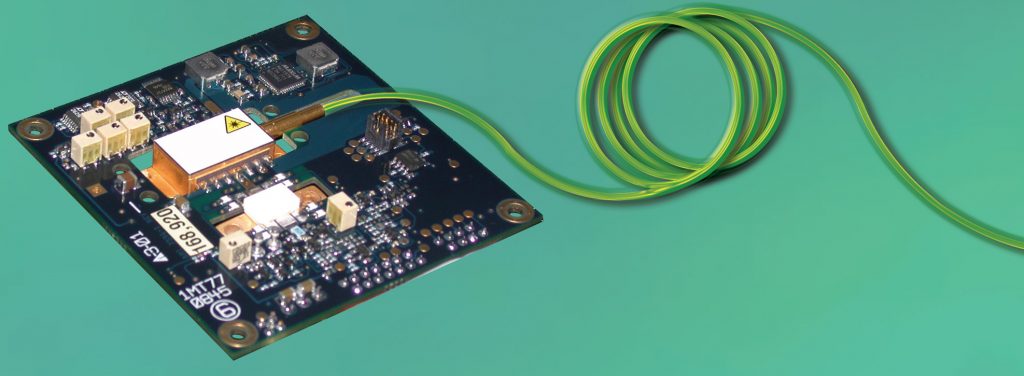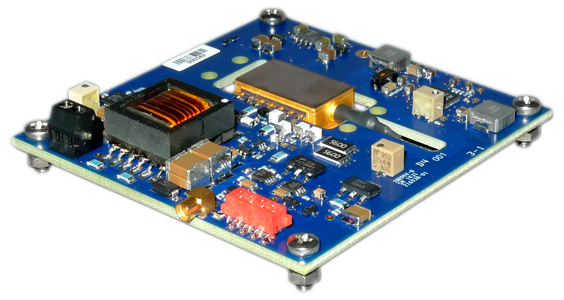The maximum compliance voltage of the Models 762 and 766 Seed Laser Diode Drivers has increased to 10 V.

AMI’s Model 762 OEM programmable seed laser diode drivers are ideal for driving 14-pin butterfly packaged laser diode modules for use in CW or pulsed fiber MOPA systems. Applications include materials processing, LIDAR systems for remote sensing, laser communication and rangefinding.
- Output Current to 2.5 A
- Output Pulse Width 20 ns to CW
- Compliance Voltage to 10.0 V
- On-Board Pulse Generator
- Digital or Analog Control
- +5 VDC Input Power
- RoHS Compliant

AMI’s Model 766 short pulse seed laser diode driver is ideal for driving 14-pin butterfly packaged laser diode modules for applications which require pulse widths less than 1 ns. Applications include materials processing, time-resolved spectroscopy, LIDAR and others. The driver circuitry operates from a single 5 V power source. All other needed voltages are generated on the board by high efficiency switching power supplies. The driver supplies a bidirectional proportional-integral-derivative (PID) thermoelectric cooler controller (TEC) with current capability of 3 A and voltage capability of 4.2 V.
- ADJUSTABLE PULSE WIDTHS < 250 ps TO 1 ns
- OUTPUT CURRENT UP TO 1.1 A
- COMPLIANCE VOLTAGE UP TO 10.0 V
- REPETITION RATE UP TO 1 MHz
- ON-BOARD TEC CONTROLLER
- 5.0 VDC INPUT POWER
- COMPACT SIZE ONLY 2.9” x 3.0” x 0.5”
For more information please contact AMI at sales@analogmodules.com
AMI offers OEM Diode Drivers for the following applications:

 sales@analogmodules.com
sales@analogmodules.com 1-407-339-4355
1-407-339-4355
 Hybrid eyesafe laser rangefinder receiver is designed for laser rangefinding & surveying equipment. Compact construction is ideal for miniature applications. Fast recovery from T0 overload allows ranging to close objects without compromising long range performance. The incorporation of an InGaAs APD gives very high sensitivity with time programmed gain to minimize false targets. Operation at both 1.06 µm and 1.54 µm is possible over a wide range of pulse widths.
Hybrid eyesafe laser rangefinder receiver is designed for laser rangefinding & surveying equipment. Compact construction is ideal for miniature applications. Fast recovery from T0 overload allows ranging to close objects without compromising long range performance. The incorporation of an InGaAs APD gives very high sensitivity with time programmed gain to minimize false targets. Operation at both 1.06 µm and 1.54 µm is possible over a wide range of pulse widths.
